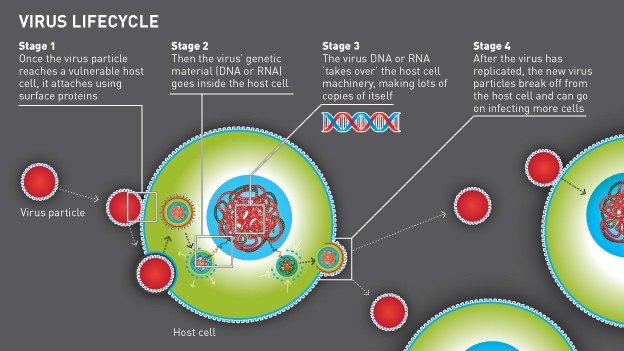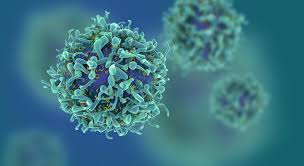Why can’t we beat viruses?
Each winter, cool and influenza clear the nation over, bringing hurts, runny noses and fever to millions. The influenza infection can murder defenseless individuals and an out and out pandemic can cause a national wellbeing emergency...

Researchers have been examining infections for a considerable length of time. A few, similar to measles and smallpox, can be crushed with antibodies and medications.

However, some infections restore each year to wreak destruction. So why are they so difficult to beat?
How an infection functions
Infections are around a hundred times littler than human cells. They come in various shapes and are available wherever there are cells to taint. Truth be told, infections are the most widely recognized natural unit on Earth, dwarfing every single other write set up together.
The diverse parts of an average infection
At the point when an infection enters our body it tries to assault a cell.
In the event that our invulnerable framework perceives the infection as a gatecrasher, it will be annihilated before the infection can pick up passage to a cell. If not, the procedure of disease starts.
Once inside the cell, the infection can commandeer the cell's own particular replication hardware, which begins to make numerous duplicates of the infection. These infections burst out of the cell, devastating it, and will endeavor to contaminate numerous more cells unless handled by the resistant framework. The contamination can likewise begin to spread to other individuals.
This can happen quick, with destroying results. The 1918 Spanish influenza was a standout amongst the most forceful viral pandemics in late history. It is thought to have caused up to 50 million passings around the world.
Halting the infection in its tracks
The human invulnerable framework is surprisingly powerful at managing viral trespassers.
A portion of the side effects caused by infections -, for example, fever, retching and tiredness - are an aftereffect of the body's safeguard systems. As a rule of influenza and chilly the resistant framework obliterates the disease.
The insusceptible reaction prompts something many refer to as gained insusceptibility - the body 'recalls' infections with the goal that it can rapidly decimate them, should they return, and furthermore make us impervious to them in future. A solitary instance of measles as a tyke, for instance, gives us long lasting protection.
Researchers have utilized this idea to ensure individuals against infections, with some remarkable achievement. By 'deceiving' our insusceptible frameworks into perceiving infections, without really getting tainted, we can create powerful protection from genuine infections.
In the seventeenth century, a technique for smallpox vaccination saw individuals grunt or rub dried smallpox scabs into their skin to make an invulnerable reaction, which at that point shielded them from getting the infection.
At that point in 1796, British doctor Edward Jenner built up the primary immunization (for smallpox) which prompted a total destruction of the sickness by 1980.
This was a point of reference ever. Surprisingly, the World Health Organization declared the aggregate worldwide annihilation of an once fatal malady.
So for what reason can't inoculation conflict with a wide range of infections?
Our resistant framework works by perceiving the proteins on the surface of the infection. Be that as it may, in specific kinds of infection, these proteins continue changing as the infection transforms, so an immunization created one year won't not work the following.
Infections like HIV have demonstrated difficult to build up any sort of antibody for whatsoever.
Medications are a different line of resistance. Shockingly, they are less compelling against infections than they are against microorganisms. Anti-infection drugs eliminate microbes by disturbing their cell dividers. In any case, infection's outer covering, known as the viral envelope, is relatively indistinguishable to the host cell's films, making them hard to target.
Some against viral medications have been created. They work by disturbing a piece of the infection's lifecycle. Some meddle with the infection's connection to the cell; others stop the infection's hereditary material being joined inside the host cell.
Utilized as a part of mix, some antiviral medications have demonstrated viable against particular infections. Hostile to viral medications can drastically drag out the lives of individuals influenced by HIV.
What we can do to decrease the hazard?
As a result of the restrictions of immunizations and medications, specialists and wellbeing assurance organizations regularly suggest 'great practice' went for decreasing the possibility of contamination. Remaining at home when tainted will abstain from spreading the contamination to others, and limiting contact with infection particles by altogether washing hands and cleaning surfaces will constrain the spread of the infection to others.
Infections are inconceivably straightforward living beings however are amazingly powerful at contaminating us. We may never have the capacity to completely beat infections, however by outfitting the energy of inoculation, the most recent hostile to virals and receiving the correct conduct, we stand a decent shot of keeping one stage in front of infections' most destructive impacts.

Great post @hamza-saleem.
thanks for your compliment..brother